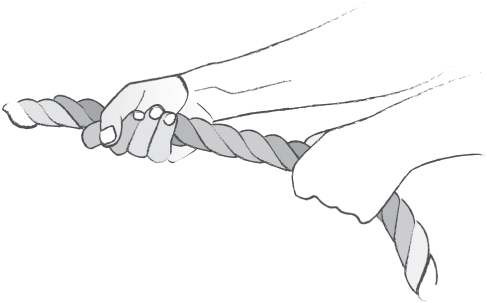Introduction
“Can I Make My Team Work?”
Intense!
Twisting your features into a mask of pain, you dig your heels into the soft grass. A rope tears into your palms. Sweat runs down your face as blood seeps from spidery cracks in your skin and onlookers gawk and yell.
A clear, tiny voice speaks to you amid the cacophony of confused thoughts swirling in your head: “So-o-o-o … what am I learning from this experience?”
Well, you should be learning about teamwork. You are in the middle of a typical organizational development exercise. This one happens to entail pulling a large rock 30 feet. Your supervisor decided to start by having you try going it alone. Yet, despite all of your 5 a.m. Crossfit workouts at the gym, you failed to move the boulder even an inch. To achieve a different result, you clearly need to work with others.
Teamwork gets things done, right?
As others join you, one by one, the collective rope-pulling effort seems to demonstrate the point. Little by little, the boulder starts moving until it nudges over the 30-foot mark. Cheers erupt. But you notice something odd. With each additional person who contributes to the effort, the boulder moves a little bit faster, but not as fast as you would have imagined. By the time the tenth person steps up, you feel the group is barely pulling harder than when it was only six, even though everyone seems to be working hard.

Afterward, ...
Get Committed Teams now with the O’Reilly learning platform.
O’Reilly members experience books, live events, courses curated by job role, and more from O’Reilly and nearly 200 top publishers.

